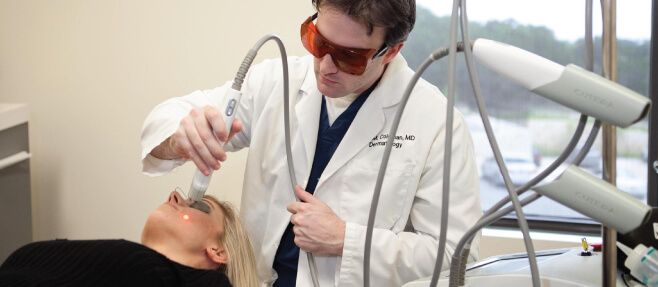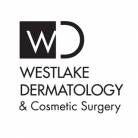Ablative Lasers vs. Non-Ablative Lasers: Which Is Best?

Laser resurfacing (also called laser skin rejuvenation, laser surgery, or laser peel) uses highly concentrated laser energy to address a variety of concerns including lines, wrinkles, sun damage, age spots, and discoloration while simultaneously improving the overall tone and texture of the skin.
There are two types of resurfacing lasers: ablative and non-ablative. The main difference between the two is how they work:
Ablative lasers (like Fraxel RePair or Active Fx lasers) focus their energy on removing the top layers of the skin. The removal of damaged skin allows the skin to replenish itself created smoother texture, increased collagen, and less signs of sun damage (pigmentation).
In contrast, non-ablative lasers (like Fraxel Dual) work by heating underlying skin to spur collagen production without altering the skin’s surface. These devices use wavelengths of light that penetrate into deeper layers of the skin. This heat causes a remodeling of the collagen layer of the skin to encourage cellular turnover and plump the skin.
While both lasers can be effective in rejuvenating the skin, ablative and non-ablative lasers are drastically different from each other. Here’s a brief comparison of the benefits and drawbacks of each laser option.
Invasiveness
As you can imagine, ablative lasers are far more invasive than non-ablative lasers since they work by removing outer skin layers. These lasers are better for treating more severe aging symptoms like deeper lines and wrinkles, acne scars, and severe discoloration. Ablative laser treatments often require some form of local anesthesia to minimize patient pain and discomfort.
Non-ablative lasers are minimally invasive and are usually most effective in addressing early aging symptoms like fine lines, mild wrinkling, and newly acquired pigmentation, as well as improving skin tone and texture. This form of resurfacing is not very painful, usual a simple topical numbing cream is all that is needed to keep patients comfortable during treatment.
Downtime (Recovery Time)
The more invasive nature of ablative lasers means longer recovery for patients, often up to 2 weeks of downtime is required depending on treatment intensity. Patients will often experience some level of sensitivity, oozing, swelling, and crusting of the skin as it heals.
Non-ablative lasers were literally developed in an attempt to get similar results to ablative lasers without the need for extended downtime. Compared to ablative lasers, recovering from non-ablative resurfacing is much milder. While the skin may appear pink and swollen for a few days post treatment, most individuals can return to normal daily activity right away.
Multiple Treatment Sessions
Ablative lasers can often produce dramatic results in a single treatment session. Non-ablative laser resurfacing often requires multiple treatment sessions (usually between 4-6 treatments) spaced out over time to achieve significant results.
Which Laser Resurfacing Option Is Best?
Both laser resurfacing options are safe and effective methods of enhancing the skin. The right type of laser depends on the needs and goal of each patient. It’s best to patients to visit a qualified laser skin resurfacing provider for an in-office consultation to determine which laser is best for achieving their desired end result.
In general, ablative lasers are ideal for patients who:
- Exhibit more severe aging symptoms
- Are dealing with acne and facial scarring
- Aim to achieve their desired end result in a single treatment
- Have the flexibility to take time off work, school, or other duties for recovery
Non-ablative lasers are ideal for patients who:
- Are younger (between 24 to 40 years of age)
- Have milder aging symptoms
- Don’t mind undergoing a series of treatments to achieve their desired end result
- Are unable to devote long periods of time for recovery
